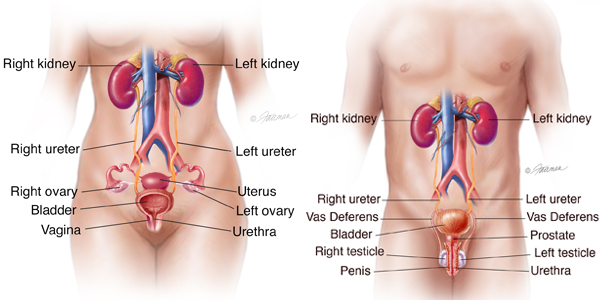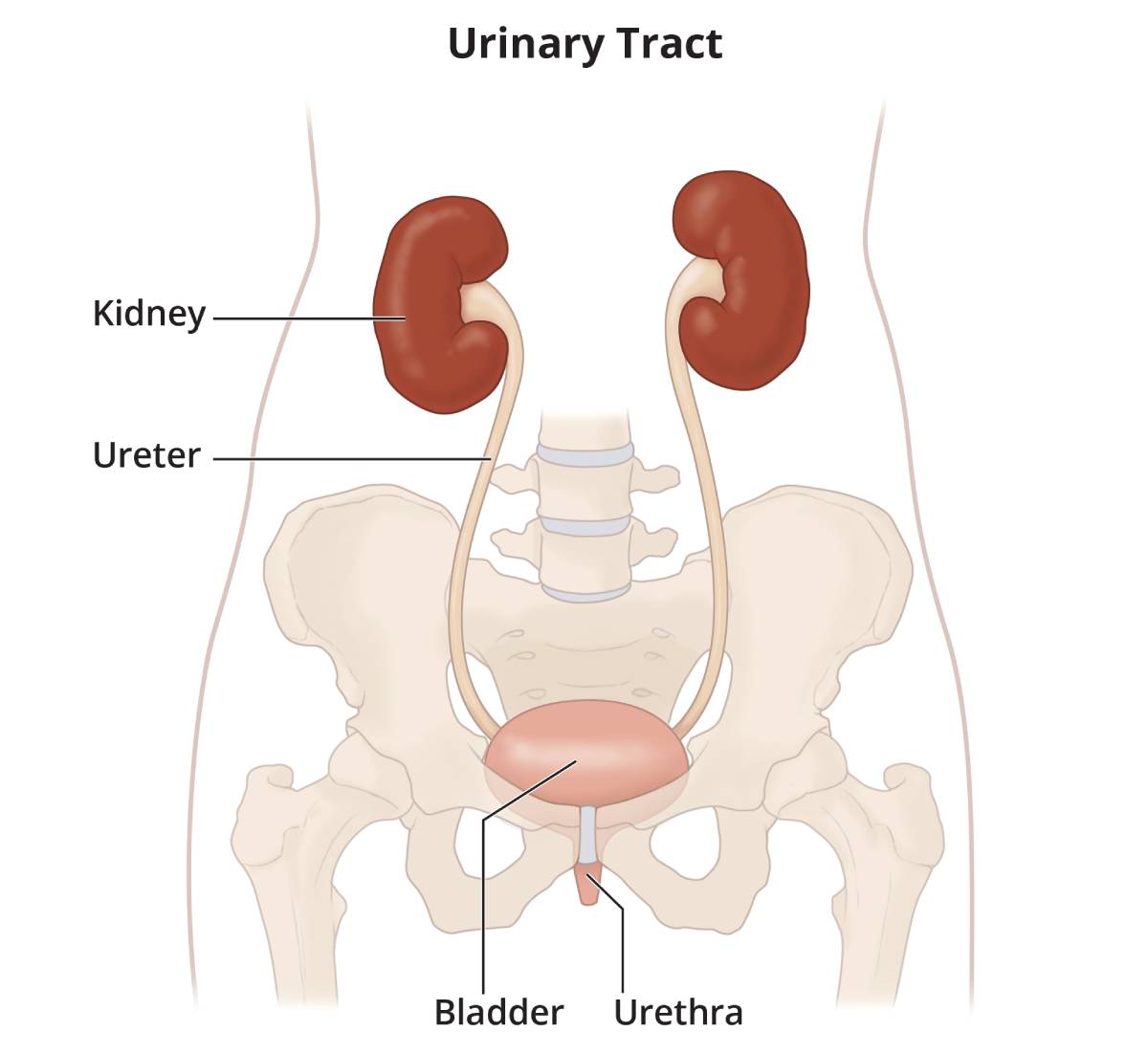Knowing Your Body: The Urinary System
The urinary system is made up of the kidneys, two thin muscular tubes called ureters, the bladder and the urethra.
Let’s explore these different parts.
Image Source: National Institute of Diabetes and Digestive and Kidney Diseases
Kidneys
The kidneys are bean shaped, reddish-brown organs that are typically found high in the abdominal cavity towards its back wall on either side of the spine. Our kidneys contain a complex network of blood vessels that stem from the renal vein and renal artery; these act as the pathways for blood to flow into the kidneys so they can complete their job of removing waste and extra fluid before returning filtered blood back to into the body and passing waste through urine to the bladder through the ureters.
Ureters
Ureters are narrow tubes that transport urine from the kidneys to the bladder. Muscles in the ureteral walls tighten and relax to force urine away from the kidneys and into the bladder. About every 10-15 seconds, small amounts of urine are emptied into the bladder through the ureters.
Bladder
The bladder is a triangle-shaped hollow organ found in the lower abdomen that serves as the main urinary reservoir. The bladder walls relax and expand to store urine and contract and flatten to empty urine through the urethra. The typical adult bladder can store up to two cups of urine for two to five hours. Nerves in the bladder alert us when it is time to go to the bathroom to empty the bladder. Some conditions prevent this alert from making it to the brain – learn more about conditions that affect this connection.
Urethra
The urethra is a tube from your bladder that allows you to pass urine. For men, the urethral opening is found at the tip of the penis and is easy to find. However, women often find locating their urethra a little more difficult, as it’s more hidden away. For women, the urethral opening is a small opening found below the clitoris and above the vagina. Female catheter users can use a standing mirror or hand-held mirror to first help find the urethra before inserting the intermittent catheter.
It is important that you do not poke around until you find your urethral opening as this could introduce bacteria into the urethra, risking urinary tract infection.
Since the male urethra is significantly longer than the female urethra, a male length catheter is naturally longer. Male length catheters tend to be between 12-16 inches (30-40cm) to ensure it is long enough to reach the bottom of the bladder and allows for complete emptying.
On average the female urethra is approximately only 1.5 inches (4cm), resulting in females having much shorter intermittent catheter lengths, being between 6-8 inches (15-20cm). Due to such a short urethra, it is important to note females are at a much higher risk of developing urinary tract infections (UTIs).

Image Source: Urology Care Foundation
If you feel that your catheter is too small or too big, speak with your doctor. You and your healthcare professional can determine together what size and length catheter may best suit your individual needs. Your doctor should take into consideration your preferences as well as your particular anatomy. Learn more about what is the right size catheter for you.
Related Articles
Enroll in me+™ or Request Product Samples
Adjusting to cathing can be tough, with a range of practical, physical and emotional challenges. You don’t have to figure it out alone.


